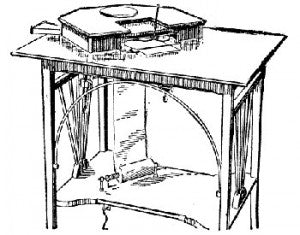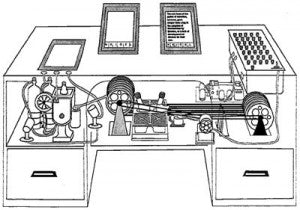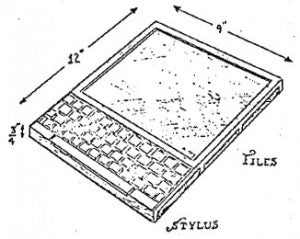New Products
-
Frost White
-
Night Black
-
Night Black
-
Cream White
-
Piano Black
-
White Cream
-
Night Black
-
Frost White
-
Metallic Gray
-
Galactic Blue
-
Cosmic Black
-
Watermelon Pink
-
Mint Green
-
Nebula Violet
- + 1
A BRIEF HISTORY

Contrary to what the rising culture of e-book readers and portable computing tablets might have you believe, every major producer of computer tablets is...well...behind the times. Though the realized product of hand-held tablets is fairly recent, the idea behind the today’s 21st century technology existed even before the invention of the computer itself.
In fact, in 1888 (a staggering 123 years ago), a patent for an electrical stylus device intended to capture handwriting was issued to American electrical engineer Elisha Gray. His “telautograph” machine can be described in today’s terms as a very early tablet fax machine. By deciphering electrical impulses, the telautograph could record a person’s signature from a stylus. Today, this same technology exists as the LongPen. 
Even the idea of information storing and sharing, described by Vannevar Bush in his essay “As We May Think” published in The Atlantic Monthly in July 1945 and in Life later that year, had its early roots in conceptual machines like the Memex. The commercialization of these early tablet concepts can be found in nearly every subsequent decade starting from the 60s, when stylus-operated clipboards were being used in Star Trek episodes and films including 2001: A Space Odyssey. 
In 1968, American computer scientist Alan Kay created the Dynabook, the earliest version of today’s laptop. Though his target audience was children, the technology was designed to provide access to digital media. That combined with the portability of the Dynabook yielded a wave of ideas that sprouted into the rapid progression of the Information Age. 
It seems the creation of portable information storage, translation, and sharing capabilities was inevitable. Today’s tablets represent a new language of all people and reflect a lifestyle suggestive of a higher intelligence than we generally accept credit for. Without much more than polycarbonates and synthetic plastics, today’s tablets can inform, inspire, connect, research, review, update, entertain, translate, communicate, and create almost better than we ourselves can.
Cases for protecting and preserving the integrity of these tangible intelligences came in conjunction with the global dispersion of mobile phones. Still susceptible to scratches, nicks, and the dangers of the elements, a variety of leather, plastic, metallic, rubber, neoprene, and other synthetics were shaped into cases for mobile phones. As the technology quickly evolved, phone cases became laptop cases, computer bags, and tablet cases. As a practical and trendy accessory, cases have become an expression of who we are and what we do. And until today’s ideas of futuristic communications and devices are realized, the simple tablet case serves to preserve over a century of intelligent inspiration.
Discounted Products
-
Blue
-
Pink
-
Morocco Blue
-
Black
-
Tan
-
Olive
-
Gray
- + 1
-
Morocco Blue
-
Black
-
Tan
-
Olive
-
Gray
- + 1
-
Apple Green
-
Candy Blue
-
Bubble Gum Pink
-
Licorice Black
-
Grape Purple
- + 1
-
Apple Green
-
Candy Blue
-
Bubble Gum Pink
-
Licorice Black
-
Grape Purple
- + 1
-
Silver
-
Silver
-
Blue
-
Black
-
Tan
-
Black
-
Blue
-
Pink
-
Black
-
Blue
-
Pink
-
Black
-
Blue
-
Purple
-
Rose Gold
-
Black
-
Blue
-
Purple
-
Rose Gold



























































